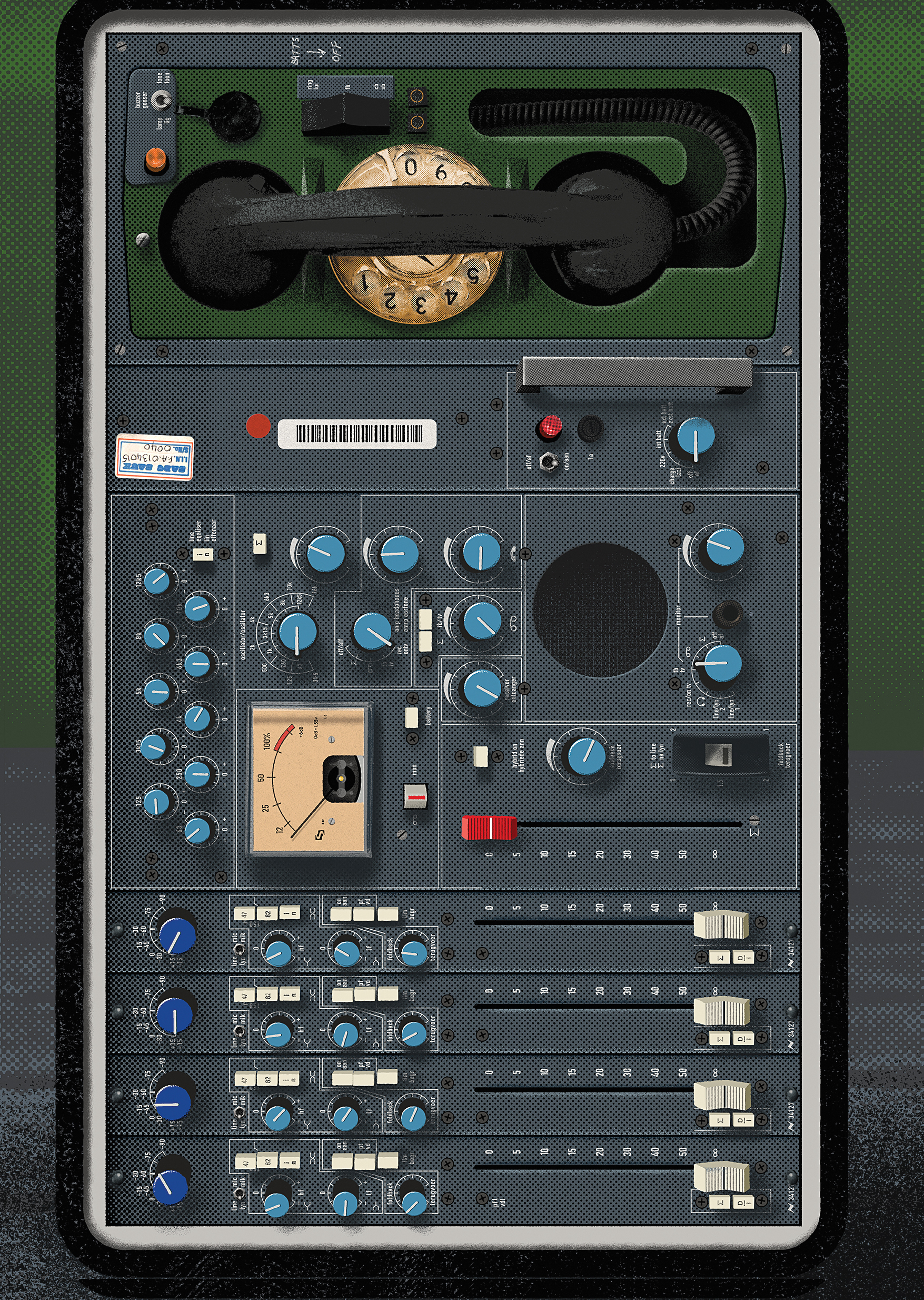Pulsar Modular never seems to disappoint when it comes to unique and colorful designs. I’ve always kept it pretty simple when it comes to EQs. I have one main software plug-in that is surgical and flexible, and a handful of other options that can do one or two tasks well that I’ll sprinkle on for color. I’m usually not a fan of EQ designs that are overly complicated and transparent, so I haven’t needed a new EQ plug-in for a long time. However, because the new P422 Fairuz provides analog color in a simplified yet familiar arrangement, I was game to try a new EQ.
I’ll jump to the feature that immediately stood out and sold me on the P422 Fairuz: The push/pull options on each EQ band. With a typical EQ, you select a frequency to center on, decide the width of the Q (sometimes predetermined or stepped), and then turn that frequency range up or down. The P422 offers three Q modes, including two different Punch options: X1 and X2. Both of these are push/pull, meaning that with a boost or cut a certain frequency range, a nearby frequency band is cutting or boosting in an opposite direction. It’s an interesting approach but can be somewhat complicated to set up on most traditional EQ designs. It’s also one of those rabbit holes that can lead down an unhealthy and obsessive path, which is why I’ve avoided many similar types of EQs in the past.
What I love about Pulsar Modular's design on the P422 Fairuz is that there are no visual indications of the EQ curves, and all the push/pull points are predetermined to happen at musically-flattering frequency points. The first Punch X1 setting is relatively subtle in that it allows some pretty extreme EQ moves without sounding notched or phase-y. Punch X2 is a little more extreme but still flattering. This is one of those times to use our ears and tinker a bit. If you’ve never experimented with a push/pull EQ before, it is a bit weird at first and takes some time to get used to. We have grown accustomed to predicting what sources will sound like when making typical EQ moves, but the P422 may throw you off at times. There are situations where it’s not going to work well, but other times where it’s magical – especially at the end of a chain when it needs a little bit of something extra. If we need to do something more deliberate and refined to a specific frequency area, there’s also a third Peak mode on each band that simply boosts/cuts with a familiar proportional Q layout.
The unique “analog” color of the plug-in comes from the Voice switch, which interacts with the familiar Pulsar Modular hammer icon as well as the Tremor control that covers the infrasonic region of the low end. Turning Voice clockwise will make the P422 Fairuz react more aggressively and tighter while adding focus and presence to the midrange. Going counterclockwise opens the sound up and gives more space. I definitely noticed a difference in headroom when aggressive with the Voice control. If you click on the light next to each EQ band, you can turn off the EQ portion of the circuit, boost individual bands (or all of them), and turn the Fairuz into a saturator. It’s quite easy to adjust the wet/dry amount with the parallel Mix control at the top right of the plug-in.
The Tremor control is more difficult to explain but fairly predictable. It’s essentially exciting and emphasizing the deep, low sub frequencies of the source with a single control. When used in conjunction with the Shelf controls at the bottom, we can add quite a bit of low end punch to the mix bus without losing control. I couldn’t precisely recreate what the P422 Fairuz’s Tremor was doing with any other EQs. A little goes a long way here, and it’s quite addicting! The Hi and Lo Shelf filter points are also beautifully picked and perfect for creating push/pull combinations on the top and bottom of a full mix. As I discovered with the Pulsar Modular P455 MDN Sidecar plug-in [Tape Op #161], I love pushing the extreme top end of a mix bus a little harder than usual, then countering with a bit of a filter roll off.
Although the P422 Fairuz has some excellent color and saturation options, the whole push/pull feature is what sold me on this plug-in. It takes what can be a pretty complicated approach and does most of it under the hood with the turn of a knob. That’s not always the right approach for every job, but I’m a consistent proponent of gear that forces us to use our ears while taking a bit of control away. There is one caveat, though: It has to sound good. The Fairuz is another great color tool to add to the list, and I appreciate that it’s unique and different.




_disp_horizontal_bw.jpg)